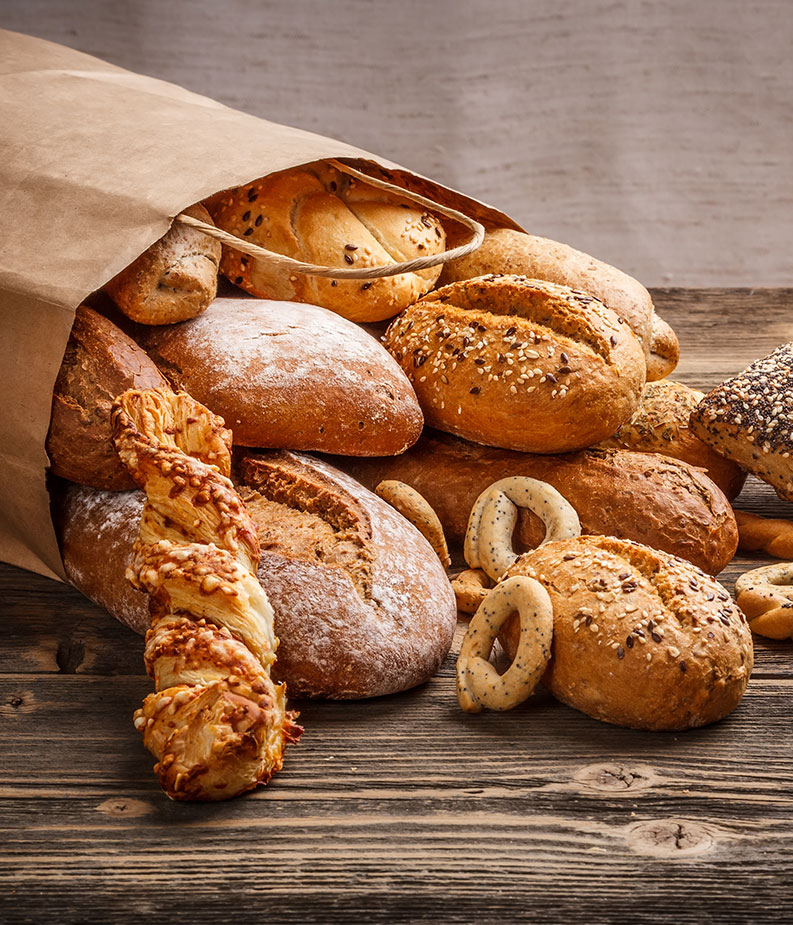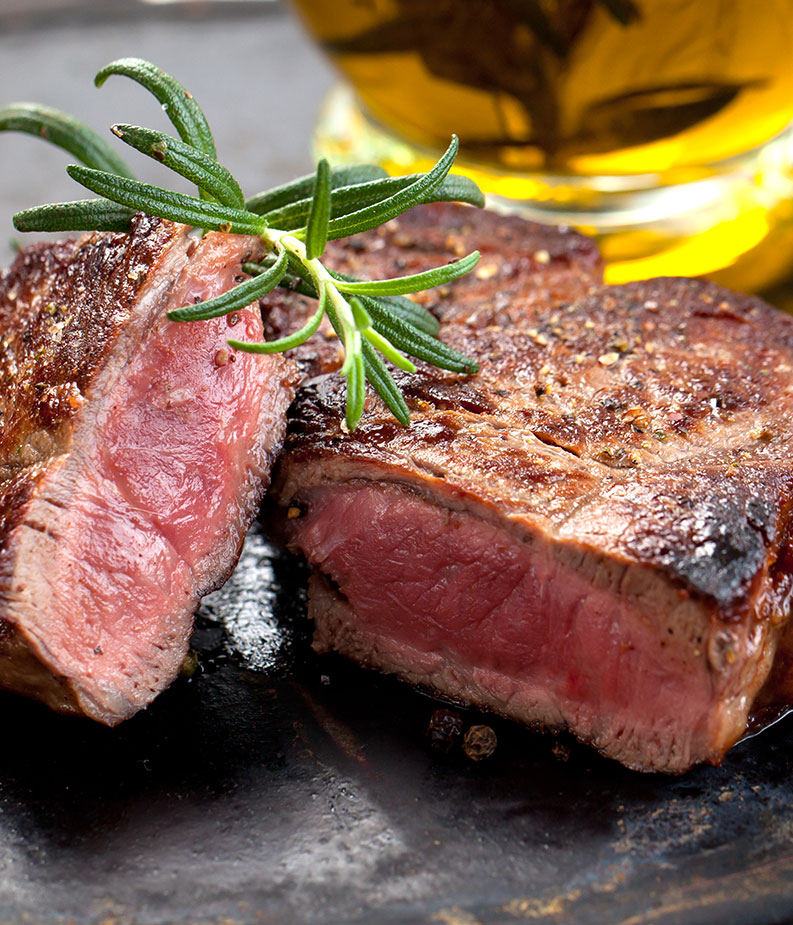
Packaging Tips for Perishable Foods
Bad packaging leads to bad outcomes. The perishable shipping experts at PeriShip will provide the knowledge and know-how you need to pack and ship your perishable product successfully.
If you would like to learn more, contact us and we will reach out to you as soon as possible regarding your shipping and packaging needs.

Baked Goods
Cakes, pastries, breads? No problem. These items can be shipped successfully year-round. Most cakes, pastries, pizza, and raw dough should be shipped frozen, particularly if the baked good has icing. Shipping using dry ice is a great way to ensure your items stay frozen in transit.
Are you shipping baked goods made from all natural ingredients? Make sure you test to confirm freezing your product is safe. Note that freezing certain products could damage the integrity; so gel shipping is a good alternative in these cases. Most baked goods have a high fat content, thus having a higher melting point and faster defrosting rate, making correct packing very important to ensure safe deliveries.

Cheese
While cheese falls under the category of dairy, it has its own requirements. In general, cheeses of all types ship very well year-round. Be sure to distinguish between hard and soft cheese—and further still between hard, semi-hard, soft, and semi-soft cheeses. Hard cheeses are made from unpasteurized milk and are aged, depleting moisture and making them drier. These cheeses easily ship year-round with extended transit and do not require gels. Although refrigeration is not required it is recommended.
Know the mindset of your customers. In the U.S., most people believe cheese needs to be kept cold and may refuse a shipment that was not refrigerated. In this case a refrigerated gel inside the package is advised.
Most cheeses made in the U.S. are soft cheeses made with pasteurized milk. As the product is more uniform and consistent, they also ship well year-round but need refrigerated gels. Transit is more limited in the summer.

Chocolates
Surprisingly delicate to ship, there are a number of factors to consider when dealing with chocolate. Chocolate is very sensitive to temperature; it begins melting at 90° Fahrenheit when the cocoa butter starts to heat, and melts completely between 104°F and 113°F. It is also sensitive to humidity levels above 50%.
Chocolate needs to be stored properly away from heat, light, and other foods. Strong odors can be absorbed by the chocolate and potentially ruin its taste. If the chocolate is stored improperly an effect called ‘blooming’ will take place. Blooming happens when the chocolate absorbs enough moisture to cause a whitish discoloration as fat or sugar crystals rise to the surface. Also, when the chocolate is subjected to extreme temperatures it will develop an oily texture. Although this phenomenon makes the chocolate visually unappealing, it is still safe for consumption.

Dairy
Milk, butter, eggs, and various creams can be successfully shipped year-round. Frozen yogurt, ice cream, and butter need to be shipped frozen, and the best way to refrigerate these for extended transit is with dry ice. Note that frozen gels can be used but transit would be limited.
All other dairy should be shipped in standard refrigeration with gels, while certain items, such as eggs, would require additional infrastructure packing. The ideal shipping temperature for most dairy items is around 38F°.
Ice cream, and other frozen dairy desserts require no preservatives. They need to be kept below -10°F and to be protected from temperature fluctuations. Airtight packaging materials are required to ensure the product arrives without loss of flavor, body, and texture.

Seafood
Fish, shellfish, and various seafood can be shipped successfully all year. These items need to be refrigerated with gel packs during transit and kept in an environment between 38°F and 48°F.
When selecting your packaging some other things to consider are insulation value and dehydration. Maintaining proper temperature is a key component to successful shipping of perishables, and fish is definitely an item we do not want losing its cool. Improper packaging can lend to unwanted moisture or unwanted dehydration of your products.
For shipments of fresh seafood, seal the product in polyethylene bags, use moisture-proof containers, and avoid wet ice. Airlines are sensitive about leaking shipments of seafood and usually conduct ‘tip tests’ before accepting shipments.

Fresh Produce
All products in this category ship quite well, either frozen or fresh, with proper care. If shipping frozen items, we recommend the use of dry ice, as it best preserves the temperature and integrity of the items. Note that frozen gel can be used for limited transit. Fresh items can only be shipped with gel, as dry ice will cause the items to become frozen, and without proper packing the items may spoil or be overly exposed to moisture.
One very important consideration when packaging and shipping fresh produce is to identify soft products (such as peaches or heirloom tomatoes). This type of produce will need to be separated or have each individual item contained in such a way as to avoid damage.
Some fruits and vegetables cannot be packed in an environment with temperatures that are too low otherwise they will be irreversibly damaged.

Juices
Frozen or refrigerated juices of all types can be shipped successfully. Frozen juices ship quite well with dry ice or frozen gels, since they could arrive slightly defrosted and still be fine. Natural juices can only be shipped with gels as they are made with natural ingredients and have a defined shelf life. For juices and drinks that are primarily made from pasteurized juice or concentrates, dry ice is also an option.
In the case of juice cleanses, many manufacturers use cold-pressure hydraulic methods of extraction from organic produce. These methods are used to avoid heat that is associated with grinding or blending methods.

Meats
For the most part red meats and various types of game (bird or otherwise) ship well when frozen, even with extended transit time. Frozen meat is essentially a refrigerant in itself, and adding either dry ice or frozen gels to the shipment will only extend transit.
Most fresh meat needs to be maintained between 33°F and 42°F. More expensive cuts may need to be between 33°F and 38°F, and can only be shipped with gel packs. In winter, extended transit is possible. In summer, although two day shipping is possible, overnight shipping is advised for optimal freshness.
For precooked meats, dry ice is the refrigerant of choice, although frozen gels can also be adequate for extended transit. If a shipment arrived slightly defrosted it could be refrozen and still remain within safe, acceptable temperature ranges.
Unprepared foods, such as salads or others containing raw meats, need to be shipped with gels to maintain ideal temps.
